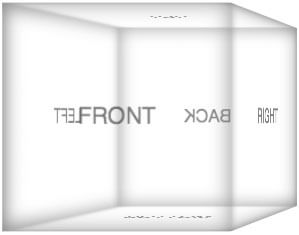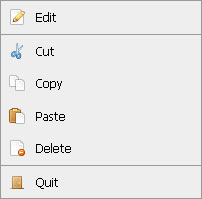David Walsh on NetTuts: Create a Twitter-Like “Load More” Widget

My latest article post for NetTuts has been published. From the intro:
Both Twitter and the Apple App Store use a brilliant technique for loading more information; you click the link and fresh items magically appear on the screen. This tutorial teaches you to use AJAX, CSS, JavaScript, JSON, PHP, and HTML to create that magic. This tutorial will also feature both jQuery and MooTools versions of the script.
It was fun creating the widget using both MooTools and jQuery JavaScript. Be sure to check it out!
![Creating Scrolling Parallax Effects with CSS]()
Introduction
For quite a long time now websites with the so called "parallax" effect have been really popular.
In case you have not heard of this effect, it basically includes different layers of images that are moving in different directions or with different speed. This leads to a...
![Create a CSS Cube]()
CSS cubes really showcase what CSS has become over the years, evolving from simple color and dimension directives to a language capable of creating deep, creative visuals. Add animation and you've got something really neat. Unfortunately each CSS cube tutorial I've read is a bit...
![MooTools ContextMenu Plugin]()
ContextMenu is a highly customizable, compact context menu script written with CSS, XHTML, and the MooTools JavaScript framework. ContextMenu allows you to offer stylish, functional context menus on your website.
The XHTML Menu
Use a list of menu items with one link per item. The...
![Sliding Labels Using MooTools]()
A week back I saw a great effect created by CSSKarma: input labels being animated horizontally. The idea is everything positive: elegant, practical, unobtrusive, and requires very little jQuery code. Luckily the effect doesn't require much MooTools code either!
The HTML
A...






i’ve been there in nettuts and i saw your tuts. Your such a brilliant man! thanks keep on shinning!
Nice to see you on nettuts !
Great article btw. Can’t wait to try this out :)
p.s: Is it possible that you forgot the normal css3 border-radius property on #posts-container ? Or maybe it was your intention to use specific webkit and mozilla properties ?
Add to #load-more its parent radius (
-webkit-border-radius:10px; -moz-border-radius:10px;) (css border inherit with border-color change will not work properly as it will require more changes & more code).I’m always lazy reading such large articles, especially from nettus, but I suppose you explain it nice…
wow, don’t you ever sleep? where do you get the time for 2 nice tutorials per day? Thanks this was interesting…
Great tutorial… One more like this
” Twitter like more button ”
http://9lessons.blogspot.com/2009/04/twitter-like-more-button-with-jquery.html
Oh this is very great! Nice and clean!
Really enjoyed your article David, your skills continue to impress.
Hi, brilliant tutorial, I’m newbie with php & mysql but this type and quality of article push me to learn more.
Can you please show us how we can implement this in wordpress.
Great article … but would love to see it fully implemented in wordpress.
Now I’ve been trying for quite some time to implement this into my WordPress installation, but I’ve failed.
Then I saw a link to someone who customized it to work with WordPress SQL functions, but that didn’t work either.
So I would love to see a really thorough tutorial and/or description of how to implement this into WordPress. Maybe even how to make it into a easy plugin.
I believe a lot of people are looking for this functionality in WordPress – would be great!